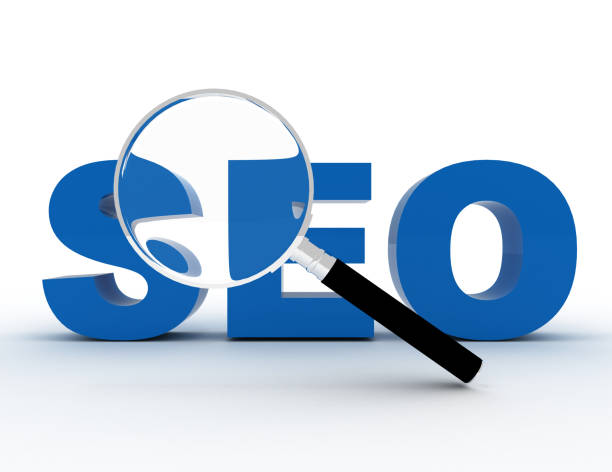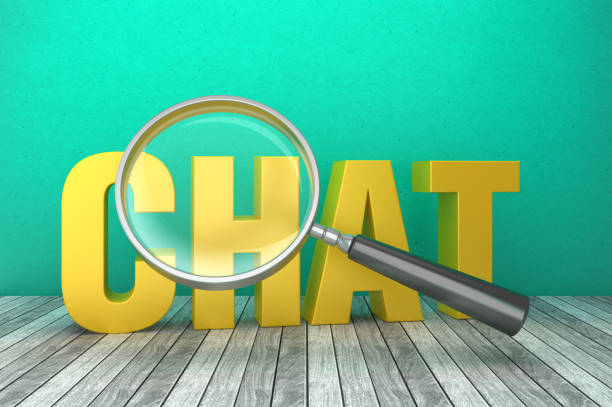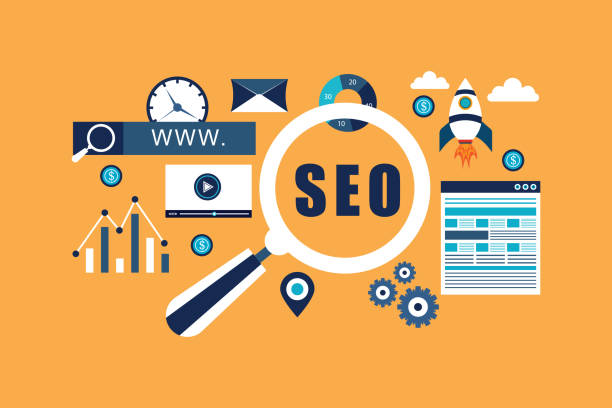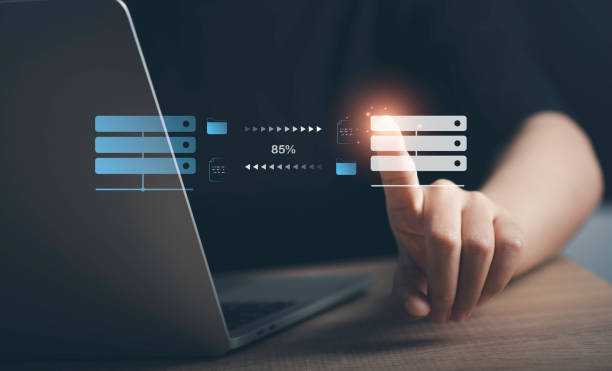What is On-Page SEO and why is it important?

What is On-Page SEO and why is it important?
On-Page SEO refers to a set of actions you perform within your website to improve its ranking in search engines like Google google.
These actions include optimizing content, code, site structure, and other related factors.
The importance of On-Page SEO lies in helping search engines better understand your site’s content, consequently displaying your site higher in search results.
By properly implementing On-Page SEO, your website’s organic traffic will increase, leading to higher sales and revenue.
On-Page SEO is foundational for success in SEO, and without it, your other efforts in Off-Page SEO alone will not be sufficient.
In fact, #On_Page_SEO is like the foundation of a building.
If the foundation is not strong, the building cannot stand firm.
Similarly, if your site’s On-Page SEO is not done correctly, your efforts for link building and other Off-Page SEO methods will not yield the desired results.
In summary, On-Page SEO is a key factor in improving site ranking in search results and increasing organic traffic.
By optimizing On-Page SEO, you can help search engines better understand your site’s content, thereby exposing your site to more audiences.
On-Page SEO is one of the most important aspects that must be considered in digital marketingdigital marketing.
Did you know your customers’ first impression of your company is your website? Multiply your business’s credibility with a powerful corporate website from Rasavab!
✅ Custom and visually appealing design tailored to your brand
✅ Improved user experience and increased customer acquisition
⚡ Get a free consultation!
Keyword Research and Its Role in On-Page SEO

Keyword Research and Its Role in On-Page SEO
Keyword research is the cornerstone of any successful On-Page SEO strategy.
You must identify the words your target audience uses to find the products, services, or information they need in search engines.
These keywords should be relevant to your site’s content and have the potential to attract organic traffic.
For this, you can use various keyword research tools such as Google Keyword Planner, Ahrefs, Semrush, and Moz Keyword Explorer.
These tools help you analyze search volume, competition, and other important metrics related to keywords.
After identifying suitable keywords, you must strategically incorporate them into your website’s content.
This includes using keywords in page titles, meta descriptions, internal headings (H1, H2, H3, etc.), the main body of the content, and image Alt tags.
However, you must avoid excessive use of keywords (keyword stuffing), as this can lead to penalties for your site by search engines.
Instead, try to integrate keywords naturally and relevantly into your content.
Note that keyword research is an ongoing process.
You should regularly review and update your keywords to keep up with changes in user search behavior and search engine algorithms.
By conducting keyword research correctly and implementing it in your On-Page SEO strategy, you can improve your site’s ranking in search results and attract more organic traffic.
Also, keep in mind that long-tail keywords long-tail keywords, which are usually questions users search on Google, are very useful and helpful for increasing site ranking.
Keywords have a significant impact on On-Page SEO.
Optimizing Page Titles (Title Tags) and Meta Descriptions

Optimizing Page Titles (Title Tags) and Meta Descriptions
Page Titles (Title Tags) and Meta Descriptions are among the most important On-Page SEO elements that help search engines gain a better understanding of your page’s content.
The page title is the title displayed in the browser’s title bar and in search results.
The meta description is a short summary of the page’s content displayed below the page title in search results.
To optimize page titles, you should use keywords relevant to the page content and keep the title length between 50 to 60 characters so that it is fully displayed in search results.
Also, the title should be attractive and encouraging to entice users to click on your link.
To optimize meta descriptions, you should also use relevant keywords and keep the description length between 150 to 160 characters.
The meta description should briefly and usefully describe the page’s content and provide a reason to click on your link.
Avoid writing duplicate descriptions for different pages.
Proper optimization of page titles and meta descriptions can significantly increase your site’s click-through rate (CTR) in search results, which will lead to an increase in organic traffic.
On-Page SEO, with the help of title tags and meta descriptions, enables search engines to better understand the content of website pages.
On-Page SEO is very effective in improving site ranking.
| Element | Description | Best Practices |
|---|---|---|
| Page Title (Title Tag) | The title displayed in search results. | Use keywords, appropriate length (50-60 characters), attractive and relevant |
| Meta Description | A short summary of the page’s content in search results. | Use keywords, appropriate length (150-160 characters), attractive and descriptive |
Content Optimization for On-Page SEO

Content Optimization for On-Page SEO
Content is king! This phrase is very common in the world of SEO and indicates the high importance of content in ranking websites in search engines.
To optimize content for On-Page SEO, you must produce high-quality, valuable content relevant to user needs.
Your content should answer user questions, solve their problems, and provide useful information.
Also, your content should be unique and original, and you should avoid copying content from others.
Using images, videos, and other multimedia elements can help make your content more engaging.
When writing content, you should naturally and relevantly incorporate keywords related to the topic into your text.
Also, you should use internal headings (H1, H2, H3, etc.) to organize the content and help search engines understand the page structure.
Furthermore, you should create internal links to other relevant pages on your site so that users and search engines can easily navigate your site.
Remember that your content should be written for users, not just for search engines.
Try to produce content that is both engaging for users and optimized for search engines.
One of the most important factors in On-Page SEO is producing up-to-date and high-quality content.
Search engines give higher scores to websites that regularly publish new and valuable content.
Producing high-quality content helps On-Page SEO and improves site ranking. On-Page SEO is one of the most important factors to consider.
Are you tired of your e-commerce site having visitors but no sales? Rasavab solves your main problem with professional e-commerce website design!
✅ Significant sales increase with targeted design
✅ Flawless user experience for your customers
⚡ Get a free consultation!
Optimizing Images and Videos

Optimizing Images and Videos
Images and videos can play a significant role in the attractiveness and effectiveness of your site.
However, if images and videos are not properly optimized, they can slow down site loading speed and negatively impact your site’s SEO.
To optimize images, you should use appropriate formats (such as JPEG for photos and PNG for graphic images) and reduce image size as much as possible without compromising their quality.
Also, you should use Alt tags to describe images so that search engines can understand the content of the images.
Alt tags should include keywords relevant to the page’s content.
To optimize videos, you should use video hosting platforms like YouTube or Vimeo and upload your videos to these platforms.
Then, you can embed the videos on your website pages.
Also, you should choose appropriate titles, descriptions, and tags for your videos so that search engines can understand their content.
Optimizing images and videos not only helps improve your site’s SEO but also enhances the user experience.
Video optimization for On-Page SEO is highly important.
Using video in content can increase user engagement.
On-Page SEO, by utilizing optimized images, also improves site speed. On-Page SEO is a vital strategy for online success.
Optimizing URLs and Site Structure

Optimizing URLs and Site Structure
URLs (Uniform Resource Locators), or web addresses, play a significant role in your site’s On-Page SEO.
URLs should be short, descriptive, and include keywords relevant to the page’s content.
Avoid using long and complex URLs that contain incomprehensible numbers and characters.
Your site’s structure should also be logical and organized so that users and search engines can easily navigate your site.
Important site pages should be easily accessible from the homepage.
Using categories and tags can help better organize your site’s content.
Creating a sitemap also helps search engines better identify and index your site’s pages.
A sitemap is an XML file that includes a list of all your site’s pages.
You can submit your sitemap to Google Search Console so that Google regularly crawls your site.
Optimizing URLs and site structure not only helps improve your site’s SEO but also enhances the user experience.
On-Page SEO also includes optimizing the structure of internal links on the site.
Internal links help search engines identify different pages of the site and assign authority to them.
On-Page SEO helps improve site ranking.
Website Loading Speed and Its Impact on SEO

Website Loading Speed and Its Impact on SEO
Website loading speed is one of the important factors in website ranking in search engines.
Users who encounter a website with a slow loading speed are likely to leave the site and visit other sites.
This increases your site’s Bounce Rate, which is a negative signal for search engines.
Google and other search engines give higher scores to websites with high loading speeds.
To improve your website’s loading speed, you can use various methods.
These methods include optimizing images, compressing CSS and JavaScript files, using caching, utilizing a Content Delivery Network (CDN), and choosing a quality web hosting service.
You can use various tools such as Google PageSpeed Insights and GTmetrix to check your website’s loading speed and identify potential issues.
Improving website loading speed not only helps improve your site’s SEO but also enhances the user experience.
| Factor | Description | Solutions |
|---|---|---|
| Image Size | Large images slow down loading. | Optimize images, use appropriate format, compress |
| CSS and JavaScript Files | Large CSS and JavaScript files slow down loading. | Compress files, reduce number of requests |
| Caching | Lack of caching causes resources to reload. | Enable browser and server caching |
| Content Delivery Network (CDN) | Not using a CDN causes loading from a single server. | Use a CDN to distribute content across different servers |
On-Page SEO and website loading speed optimization are among the most important success factors in the online world.
Optimizing loading speed improves site ranking.
On-Page SEO plays a key role in increasing website traffic.
Mobile Optimization (Mobile-Friendly)

Mobile Optimization (Mobile-Friendly)
Given the increasing use of mobile phones for internet searches, optimizing websites for mobile is of particular importance.
Google gives higher scores to mobile-optimized websites.
A mobile-friendly website should have a Responsive Design, meaning the site should automatically adapt to the screen size of the user’s device.
Additionally, the site should have a high loading speed on mobile devices and be easy to use on mobile.
To check if your site is optimized for mobile, you can use Google’s Mobile-Friendly Test tool.
This tool helps you identify and fix potential issues with your site.
Optimizing for mobile not only helps improve your site’s SEO but also enhances the user experience and increases user satisfaction.
On-Page SEO and site responsiveness have a direct impact on improving site ranking in Google.
On-Page SEO should keep pace with the latest changes in Google’s algorithms.
On-Page SEO is an ongoing process and requires review and updates.
On-Page SEO helps your site to be better seen.
Did you know a weak corporate website costs you many opportunities daily? Solve this problem forever with professional corporate website design by Rasavab!
✅ Create a powerful and reliable image for your brand
✅ Targeted attraction of new customers and increased sales
⚡ [Get a free website design consultation]
Using Structured Data (Schema Markup)

Using Structured Data (Schema Markup)
Structured data (Schema Markup) are codes that help search engines better understand your site’s content.
By using structured data, you can provide additional information about your site’s pages, such as content type, author, publication date, ratings, etc.
This information can be displayed in search results and attract more user attention.
Using structured data can increase your site’s click-through rate (CTR) in search results.
To use structured data, you can use the Schema.org vocabulary.
This vocabulary includes a set of data types and properties that you can use to describe your site’s content.
You can place structured data as HTML code on your site’s pages.
Google offers a tool called the Structured Data Testing Tool, which you can use to check the validity of your structured data.
Using structured data is an advanced method for improving your site’s SEO.
On-Page SEO through structured data increases site credibility.
On-Page SEO and the use of schema markup can have a significant impact on site ranking.
On-Page SEO requires technical knowledge and experience.
Monitoring and Analyzing On-Page SEO Results

Monitoring and Analyzing On-Page SEO Results
On-Page SEO is an ongoing process that requires monitoring and analysis.
You should regularly review the results of your On-Page SEO efforts and, if necessary, adjust your strategy.
For this, you can use various tools such as Google Analytics and Google Search Console.
Google Analytics helps you track your site’s traffic, analyze user behavior, and evaluate the performance of different pages on your site.
Google Search Console helps you examine your site’s performance in search results, identify potential site issues, and submit your sitemap.
By using these tools, you can obtain useful information about the keywords users employ to find your site, the pages that receive the most traffic, your site’s bounce rate, loading speed, and other important SEO metrics.
By analyzing this information, you can identify the strengths and weaknesses of your On-Page SEO strategy and make necessary adjustments if needed.
Monitoring and analyzing On-Page SEO results help you continuously improve your site’s performance and increase its ranking in search results.
Data analysis in On-Page SEO is crucial.
On-Page SEO is a long-term investment and requires patience and perseverance.
On-Page SEO will yield higher returns when results are analyzed.
To succeed in On-Page SEO, one must be patient and persistent.
Frequently Asked Questions
| Question | Answer |
|---|---|
| What is On-page SEO? | On-page SEO refers to a set of actions performed within your website to improve its ranking in search engine results. This includes optimizing content, site structure, and HTML code. |
| Why is On-page SEO important? | On-page SEO helps search engines understand your page’s content and determine if it is relevant to searchers. It is the foundation of any successful SEO strategy. |
| What are the key elements of On-page SEO? | Page Title (Title Tag), Meta Description, keyword usage, image optimization, heading structure (H1, H2, …), internal linking, and content quality are key elements. |
| How to optimize the page title (Title Tag)? | The page title should include the main keyword, be attractive and encouraging for clicks, and have a length between 50 to 60 characters (or appropriate pixels) to be fully displayed in search results. |
| What is the role of Meta Description in On-page SEO? | The meta description is a summary of the page’s content displayed below the title in search results. Although it does not directly affect ranking, it helps SEO by increasing the click-through rate (CTR). |
| What is the importance of using heading structure (H1, H2, H3) in On-page SEO? | Headings structure the page content and make it easier to read. H1 is usually the main title of the page and should include the keyword. H2 and H3 are used to organize subsections and help search engines understand the content hierarchy. |
| How to effectively use keywords in content? | Keywords should be used naturally and logically throughout the content, including the introduction, body, and conclusion. Avoid excessive keyword stuffing. |
| What are the steps involved in optimizing images for On-page SEO? | This includes compressing images to reduce size, using descriptive file names, adding appropriate alternative text (Alt Text), and optimizing the image title and description. Alt Text is crucial for accessibility and helping search engines understand image content. |
| What is Internal Linking and what are its benefits? | Internal linking means creating links from one page on your website to another page on the same website. This helps users easily navigate your site, distributes page authority across the site, and helps search engines better understand your site’s structure. |
| What is the importance of content quality in On-page SEO? | High-quality, accurate, comprehensive, and valuable content for users, is the cornerstone of On-page SEO. Search engines prefer content that meets user needs. Quality content leads to longer dwell time and reduced bounce rate, which are positive SEO signals. |
And other services of Rasavab advertising agency in the field of advertising
- Smart Direct Marketing: A combination of creativity and technology for online growth through attractive UI design.
- Smart Marketing Automation: Designed for businesses seeking online growth through precise audience targeting.
- Smart Customer Journey Map: A novel service to increase click-through rates by optimizing key pages.
- Smart Conversion Rate Optimization: A combination of creativity and technology to increase site visits through intelligent data analysis.
- Smart Marketing Automation: A fast and efficient solution for improving SEO ranking with a focus on SEO-driven content strategy.
And over hundreds of other services in the field of internet advertising, advertising consultation, and organizational solutions
Internet Advertising | Advertising Strategy | Advertorial
Resources
VirgoolMihanlearnSeokarNamatek
? Are you looking to elevate your business in the digital world? Rasavab Afarin, a leading digital marketing agency specializing in SEO, online advertising, and fast website design, paves your path to success.
📍 Tehran, Mirdamad Street, next to Bank Markazi, Southern Kazeroon Alley, Ramin Alley, No. 6



